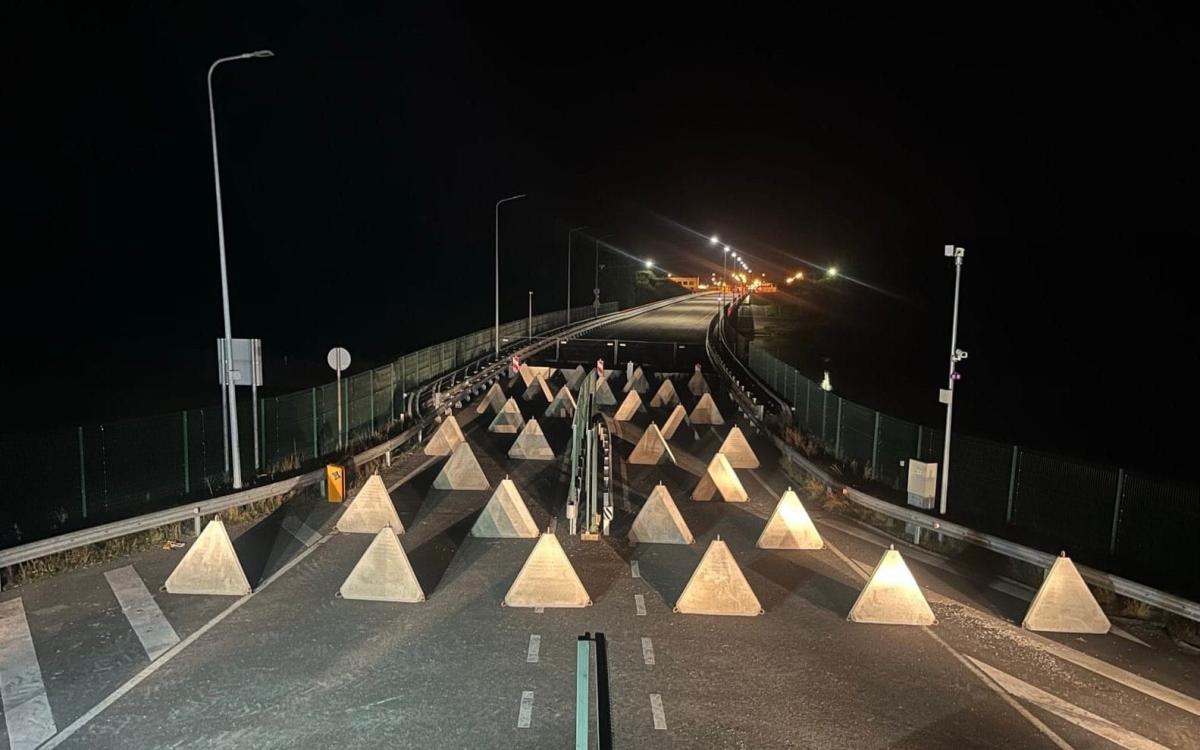Lithuania has installed “dragon’s teeth” anti-tank barriers on bridges that link the country to Russia.
Its defence ministry also said “firepower” had been built around another fortified bridge over the Neman River to stop a potential Russian attack.
“Fortifications will be supported by firepower, in case it’s needed, to stop and destroy the enemy,” it said.
The Neman River forms part of Lithuania’s border with Russia’s Kaliningrad exclave. It is 580 miles long and flows from Belarus through Lithuania and then into the North Sea.
A website linked to the British Army said that “dragon’s teeth” are used to slow tanks and to leave “stranded vehicles vulnerable to enemy attacks”.
They were first used in the Second World War and are made of reinforced concrete.
Photographs of the floodlit bridge across the Neman River showed dozens of triangular concrete bollards blocking the road.
‘Precautionary step’
Reports said that mines, machine guns, barbed wire and metal hedgehogs had also been installed.
“This is a precautionary step to ensure more effective defence,” said the Lithuanian defence ministry.
Since the Kremlin invaded Ukraine in 2022, the Kaliningrad-Poland-Lithuania border area has become one of the most heavily fortified border zones in Europe.
Last month, Lithuania also installed “dragon’s teeth” on the Queen Louise Bridge, built in 1907, that spans the Neman River and connects the Russian town of Sovetsk in Kaliningrad region to the Lithuanian village of Panemune.
Photos of a Lithuanian defence ministry press conference near the Queen Louise Bridge showed a giant black and orange “Z” – a Russian pro-war symbol – emblazoned on a building facing Lithuania.
Laurynas Kasciunas, Lithuania’s defence minister, said this week that deploying the “dragon’s teeth” was part of a defensive rollout across all of Lithuania’s bridges.
“Some bridges will be fortified, others will be prepared to be blown up,” he said.
Other EU and Nato states that border Russia and Belarus have spent millions updating their fortifications. The most extensive is “East Shield”, Poland’s programme. This will cost roughly £1.8 billion and is being part-funded by the EU.

